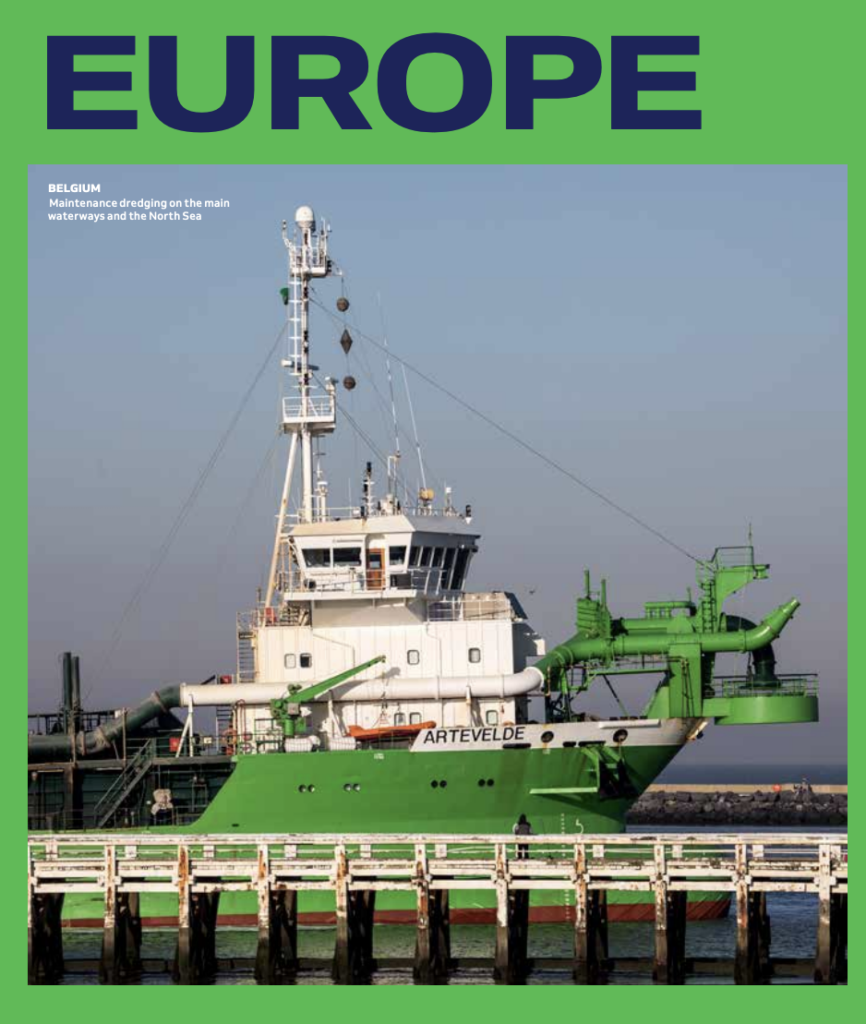Reform River and Port Policies to Boost Trade, Reduce Flooding, Recharge Groundwater
Water is key to prosperity across the world, from rain for agriculture to rivers for irrigation, transportation, and recreation. Too much water, like too little, causing floods or leaving land too dry, devastate and impoverish everyday people around the world. Effective water management, constructing dams for example, protects and enriches communities by transforming potential floodwaters to reservoirs, recreation, and hydropower.
But dams, like rivers and ports, require constant maintenance. Silting is the natural process of dirt drifting downstream and settling in rivers, reservoirs, and ports. Natural, but reducing water storage and shipping since silting over time reduces water storage and transport along rivers, and to ports.
Debaters therefore advocate ending the 1906 Foreign Dredge Act, citing: How to Improve America’s Ports, Heritage Foundation, June 24, 2020, Dredging Protectionism (Regulation, Summer, 2022), and Grassroot Scholar Colin Grabow enters new era in effort to reform Jones Act (Grassroot Institute, September 23, 2022)
Improved river management also reduces flooding. Recent rains in California have caused flooding again. Climate change or poor water management? Steven Greenhut in California’s Floods Another Reminder of Failed Water Management Policies (Reason, January 20, 2023), in reaction to the flooding and evacuation in Sacramento, makes the case for the latter.
California’s current reservoirs, now nearly full from atmospheric rivers, are not the only place to store excess water. Far more could be stored deep underground with better water policies. See for example this 2019 report from the Water Education Foundation:
Managed aquifer recharge projects strive to replicate the natural process in which winter rains soak into the ground and replenish water above and below ground. However, projects require extensive monitoring and management to be successful. Farmers for years inadvertently recharged their aquifers through flood irrigation of certain crops and orchards. If they’re asked to act intentionally to recharge, they want assurances they can reap the benefit.
“If we put water in, we want to retain the right to take it out,” Don Cameron, vice president and general manager of Terranova Ranch, 25 miles southwest of Fresno, said at the Berkeley symposium. Terranova has been a leader in using winter runoff to flood its fields for groundwater recharge. “To me that’s the incentive for a grower to do groundwater recharge. I want water security just as much as anyone else does.”
RECHARGING DEPLETED AQUIFERS NO EASY TASK, BUT IT’S KEY TO CALIFORNIA’S WATER SUPPLY FUTURE (Western Water, October 10, 2019)
Until this year’s rains, California had been too dry rather than too wet. California, like Arizona, Nevada and Utah, has access to vast quantities of water, but lacks markets and rule of law institutions for water to flow freely toward higher valued uses. For example, a network of canals has for centuries enabled shipping between European rivers and now supports a thriving tourist industry. (Though dry spells hit Europe’s canals too: Low Water Levels Disrupt European River Cruises, a Favorite of U.S. Tourists, New York Times, August 29, 2022)
California, like Arizona and Nevada, prospered thanks to vast water projects redirecting rivers and building dams for reservoirs. Though students researching dredging protectionism focus on port and transportation problems caused by limited US dredging capacity, deeper problems (or problems caused by a lack of deepness), can also be found further inland.
U.S. Aqua Services offers and overview of dredging and water management: Reservoir Dredging, Dam Dredging
River, Channel, And Canal Dredging, Environmental Dredging.
A range of technologies could reduce flooding and improve groundwater recharging. PERC’s Water page provides articles on water markets and other institutional reforms to improve water management. Recharge Net Metering to Enhance Groundwater Sustainability (Berkeley Center for Law, Energy & the Environment, 2021) explains that land owners who invest resources in increasing recharge as they reduce flooding, should be incentivized:
Recharge Net Metering (ReNeM) is a strategy that incentivizes MAR [Managed aquifer recharge] by offsetting costs incurred by landowners for operation and maintenance of water collection and infiltration systems that are placed on their land. ReNeM participants benefit directly through the rebate program; they also benefit indirectly (along with other resource users and regional aquatic systems) because MAR helps to improve and sustain the supply and quality of groundwater.
See also Amid soaking storms, California turns to farmland to funnel water into depleted aquifers (LA Times, March 21, 2023).
Without world class water management and dredging technology and services, how will communities benefit from deeper rivers, canals ,and reservoirs for future transportation, recreation, and flood protection?
Which region of the world is missing from this 85-page DEME report (pdf)?

